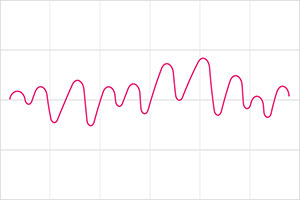Understanding music
Expression
Expression includes: tempo, dynamics and articulation.
These features of music are called ‘expressive’ features because without them, music can sound robotic and flat. The use of expressive techniques is important for bringing a piece of music to life.
Tempo
Tempo is the speed of a piece of music. Often the tempo is understood from the underlying pace of the beat. A fast beat indicates the music has a fast tempo and a slow beat or slow inferred beat indicates a slow tempo.
Slower

Faster

Some music does not have a beat, but we can sense the tempo of the music. Sometimes this can be assumed from a change in musical pitch. For example, in musically emulating the feel of a car or a plane accelerating, the inclination of a composer might be to gradually raise the pitch of the sound to indicate that the movement is getting faster.
Dynamics
Dynamics are the loudness and softness of music and can dramatically impact on our emotional responses. For example, loud sounds can make us frightened, or excited. Softer sounds can be soothing, or they can sometimes make us feel sad. Our responses depend on a range of factors including where we are and how we feel at a particular time and our experiences of hearing different types of sounds.
Getting louder (crescendo)

Getting softer (diminuendo)

Articulation
Articulation in music is like the fine-tuning of expressiveness. Musicians need to consider how they will perform every note and how each note connects expressively to those before and after it. Microtiming, the amount of dynamic on a particular note, the way a note is ‘attacked’ and allowed to play out or ‘decay’, the shortness or length of a note, and the shaping of a group of notes, are all important aspects of articulation.
Back to Top